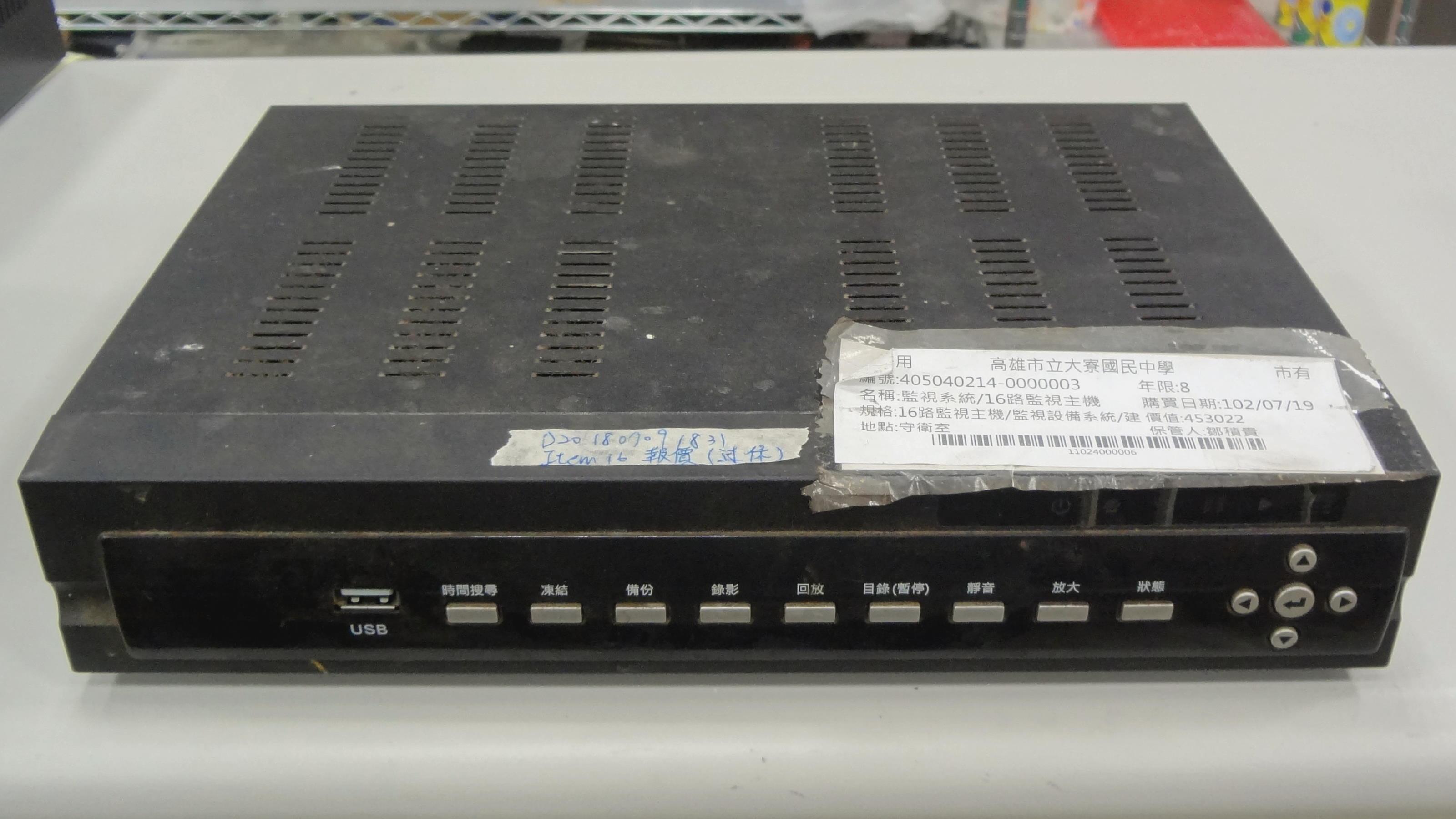In today's world, a Digital Video Recorder (DVR) is a must-have device for anyone looking to capture, store, and review their favorite TV shows, movies, or even surveillance footage. However, as technology evolves, so do the demands on these devices. Upgrading your Digital Video Recorder can significantly enhance its performance, ensuring you get the best quality recordings and the most efficient storage. This article will guide you through various methods to upgrade your DVR for better performance.
Before diving into the upgrade process, it's essential to understand the basic components and functionalities of a DVR. A DVR typically consists of the following:
- Hard Drive: This is where all your recordings are stored. The capacity of your hard drive determines how much content you can save.
- Processor: The brain of the DVR, responsible for processing the video data.
- Memory (RAM): Helps in managing multiple tasks and ensures smooth operation.
- Software/Firmware: The operating system that controls how the DVR functions.
- Tuners: These allow the DVR to receive and record multiple channels simultaneously.
By knowing these components, you can better understand which areas to focus on when upgrading your DVR.
Upgrading the Hard Drive
Why Upgrade the Hard Drive?
The hard drive is arguably the most crucial component of a DVR. It determines the amount of content you can store and affects the speed at which data can be accessed and recorded. Upgrading your hard drive can lead to:
- Increased storage capacity
- Faster read/write speeds
- Better reliability and lifespan
Choosing the Right Hard Drive
When selecting a new hard drive for your DVR, consider the following factors:
- Capacity: More storage means more hours of recordings. Aim for at least 1TB, but 2TB or higher is recommended for heavy users.
- Speed: A drive with a higher RPM (Revolutions Per Minute) will provide faster data access. Look for drives with at least 7200 RPM.
- Reliability: DVRs operate continuously, so choose a drive designed for constant use, such as those labeled for surveillance or NAS (Network Attached Storage) use.
- Compatibility: Ensure the new hard drive is compatible with your DVR model. Check the DVR’s manual or manufacturer's website for compatibility lists.
Installation Process
Upgrading your hard drive involves a few steps:
- Backup Your Data: Before replacing the hard drive, back up any essential recordings.
- Open the DVR Case: Unplug the DVR and carefully open its case using appropriate tools.
- Replace the Old Hard Drive: Disconnect the old drive and connect the new one, ensuring all connections are secure.
- Format the New Drive: Upon powering up, your DVR might need to format the new hard drive. Follow the on-screen instructions to complete this process.
- Restore Your Data: If you backed up data, restore it to the new hard drive.
Enhancing the Processor and Memory
Importance of Processor and Memory
The processor and memory of your DVR play a crucial role in how efficiently it can handle tasks, such as recording multiple channels simultaneously, processing video data, and running applications.
Upgrading the Processor
Unfortunately, upgrading the processor in a DVR is not always possible due to its integration into the motherboard. However, if you have a DVR model that allows for this, you can look for:
- Compatibility: Ensure the new processor is compatible with your DVR's motherboard.
- Performance: Choose a processor with higher clock speeds and more cores for better multitasking capabilities.
Increasing Memory (RAM)
Upgrading the RAM can be a more accessible and effective way to boost your DVR's performance. Here's how to do it:
- Check Compatibility: Identify the type and maximum capacity of RAM your DVR supports.
- Purchase the RAM: Buy the highest capacity and fastest speed RAM compatible with your DVR.
- Installation: Power off the DVR, open the case, and locate the RAM slots. Replace the old RAM with the new modules, ensuring they are properly seated.
- Test the DVR: Power on the DVR and check if it recognizes the new RAM. Most DVRs will show the total amount of memory during startup.
Updating the Software/Firmware
Why Update the Software/Firmware?
Software and firmware updates can bring numerous improvements, including:
- Enhanced functionality and features
- Bug fixes and improved stability
- Better compatibility with new devices and standards
- Security enhancements
How to Update
- Check for Updates: Visit the manufacturer's website or access the DVR’s settings menu to check for available updates.
- Download the Update: If an update is available, download it to your computer or directly to the DVR if it supports network updates.
- Install the Update: Follow the instructions provided by the manufacturer to install the update. This process may involve copying the update to a USB drive and connecting it to the DVR.
- Restart the DVR: After the update is installed, restart the DVR to apply the changes.
Optimizing DVR Settings
Recording Settings
Adjusting your DVR's recording settings can improve performance and optimize storage use:
- Resolution and Quality: Lowering the recording resolution and quality can save storage space, though it may impact playback quality.
- Recording Schedules: Set specific recording schedules to avoid unnecessary continuous recording, which can tax the system.
- Overwrite Protection: Configure the DVR to overwrite old recordings when the hard drive is full, ensuring you always have space for new content.
Network Settings
For DVRs connected to a network, optimizing network settings can enhance performance:
- Bandwidth Management: Allocate sufficient bandwidth to your DVR to ensure smooth recording and playback.
- Remote Access: Enable and configure remote access settings for easy monitoring and management from other devices.
Adding External Storage
Benefits of External Storage
If upgrading the internal hard drive is not sufficient, adding external storage can provide:
- Additional storage capacity
- Flexibility to expand as needed
- Easy transfer of recordings between devices
How to Add External Storage
- Choose a Compatible External Drive: Ensure the external drive is compatible with your DVR’s USB or eSATA ports.
- Connect the Drive: Plug the external drive into the appropriate port on the DVR.
- Configure the DVR: Access the DVR’s settings menu to configure the external drive for recording and storage.
- Test the Setup: Record a test video to ensure the dvr for antenna tv can save and playback content from the external drive.
Improving DVR Cooling
Importance of Cooling
DVRs can generate a significant amount of heat, especially when running continuously. Overheating can lead to performance issues and hardware failures.
Cooling Solutions
- Internal Fans: Ensure your DVR has adequate internal cooling fans. If not, consider installing additional fans.
- External Cooling: Use external cooling pads or fans to help dissipate heat.
- Proper Ventilation: Place the DVR in a well-ventilated area to allow for natural airflow.
Regular Maintenance
Keeping Your DVR in Top Shape
Regular maintenance can prevent performance issues and extend the lifespan of your DVR:
- Clean the Device: Regularly clean dust from the DVR’s vents and internal components.
- Check Connections: Ensure all cables and connections are secure.
- Monitor Performance: Periodically check the DVR’s performance and storage capacity, addressing any issues promptly.
- Update Regularly: Keep the DVR’s software and firmware up to date.
Upgrading your DVR for better performance involves a combination of hardware upgrades, software updates, and regular maintenance. By enhancing the hard drive, processor, memory, and cooling, as well as optimizing settings and adding external storage, you can significantly improve your DVR’s functionality and reliability. Regularly updating the software and performing maintenance will ensure your DVR continues to operate at its best, providing you with high-quality recordings and smooth playback for years to come.

